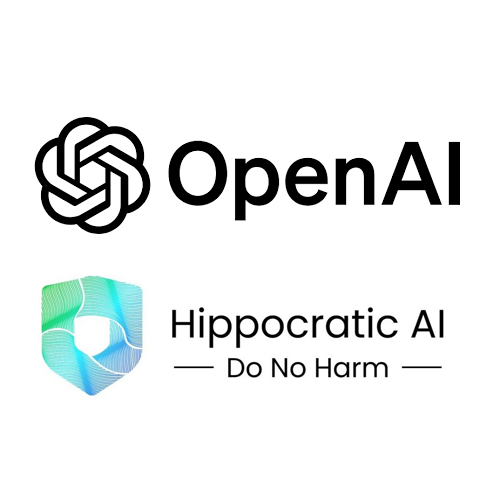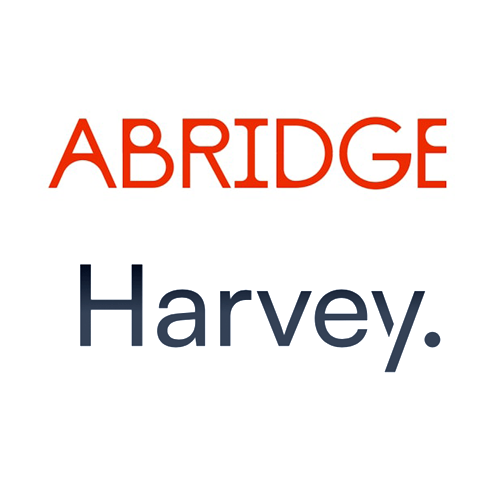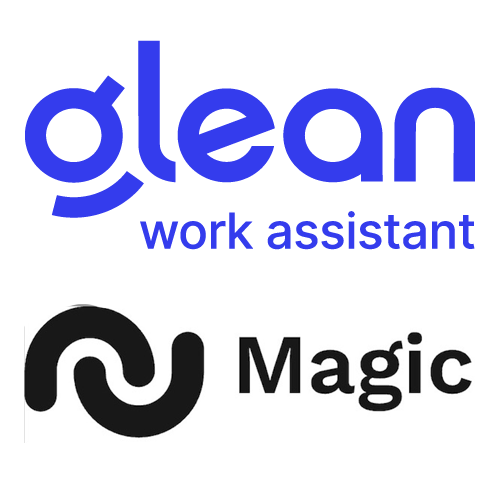
Impact and Opportunity: Private Markets Investing in the Artificial Intelligence Revolution
Private markets have seen continuous innovation cycles over the past 50 years — from personal computing to the mobile revolution to cloud computing. Market defining companies have emerged from each of these waves, creating lasting value for end users and driving strong returns for the firms that backed these companies. While markets ebb and flow, innovation continues to march forward and generate strong investment opportunities.
Artificial intelligence (AI) is the latest transformative technology impacting all aspects of life with the potential to fuel growth across a broad range of industries. This article includes insights gained from conversations we have had with GPs on the front lines of AI about where private equity and venture capital investment opportunities are today and the potential impact this technology will have on incumbent companies.
AI: The next innovation wave
AI is technology that allows computers or machines to perform complex tasks usually done by humans, like reasoning, decision making, and creating. While the genesis of AI dates back decades, it surged into the mainstream with the launch of ChatGPT in late 2022. This marked the introduction of generative AI (GenAI) to the masses, a significant leap beyond traditional AI applications. It is this new component — the creation piece, the generative capabilities — that has captured the world’s fascination today. We are in the early innings of this next innovation wave, but what’s clear is that the market opportunity is vast. This leads to a deep, diverse, and rapidly evolving investment landscape.
Innovation waves can provide deep investment opportunity
Companies shown above are intended for illustrative purposes only. While these may be actual investments in the HarbourVest portfolio, there is no guarantee they will be in a future portfolio. A reference to a specific company does not constitute a recommendation to invest nor an indication that HarbourVest funds or accounts hold any specific company.
Looking at the investable AI universe
Excitement surrounding GenAI has led to incredible innovation and growth in the market. The value of global PE/VC-backed investments in artificial intelligence rose nearly 200% in 2024, attracting $56 billion across 885 deals.1 The technology’s longer-term prospects also appear favorable. AI’s total addressable market is expected to approach $1 trillion by 2027 and grow at a compound annual rate of up to 55% over the next three years.2
A tech stack refers to a collection of technologies, frameworks, and infrastructure components that are used together to build and deploy computer systems. There are two major categories within the AI tech stack where most venture managers have focused to date: infrastructure and applications.
The AI tech stack: Defining the investment landscape
Infrastructure: The foundation on which everything is built. Infrastructure includes tools, models, cloud platforms, and compute and hardware. Cloud platforms are not a major focus for most venture managers today, nor are compute and hardware; these layers are typically dominated by large tech incumbents and focus on chips, hardware, and fundamental computing resources. So, we will concentrate on the remaining infrastructure segments layered above that:
Foundation models: The pre-trained, large models that require vast amounts of data and resources to train. There are general-purpose foundation models and domain-specific models which are built for specific industries.

Tools and enablement: These are the “picks and shovels” that support and build a scalable AI ecosystem, from providers of data or data labeling to those that help manage model safety and security. Venture managers with deep technical expertise have invested at this layer.

Applications: The application layer is comprised of end-user-facing applications that cater to both consumers and enterprises. This is an area of focus for many general partners (GPs) today due to enhanced model accessibility and maturing infrastructure. Within applications, it is helpful to delineate between vertical applications focused on serving a specific industry, and horizontal applications which have broader functional use cases.
Companies in the vertical applications category leverage AI functionality and build custom solutions that solve industry-specific pain points; to date, they have seen less competition from large tech incumbents.

Horizontal applications offer broader, more generalized, adaptable functionality for consumers and businesses. They can assist with data-driven decision making, task automation, and more.

Across these areas, investors are often interested in what these companies really need to be successful in the AI space. First, like any firm, an AI company needs to demonstrate all the traditional factors that make any company successful — from a strong go-to-market motion to good governance practices to effective leadership. These elements are vital. Second, is that robust talent, data, and distribution are paramount to AI companies.
Talent: AI companies today need highly skilled employees with deep technical expertise, often gained from years of training and education; many have worked in a handful of exceptional research institutions and labs. This talent pool is limited, so there is significant competition for the best AI builders and engineers.
Data: Data is the lifeblood of AI companies. Models are hungry for data and need significant inputs for training. Beyond models, AI companies can build more defensible moats if they can leverage unique, proprietary data sets.
Distribution: This is a key consideration because incumbents are playing an active role in this innovation cycle and have strong existing distribution channels. Companies need to have distribution on their own, through partnerships, or operate in a market segment where incumbents do not have a right to win.
Considerations for the existing portfolio
Many investors are asking questions about the implications of the GenAI revolution. Are incumbents or startups better positioned? What is the risk of AI disruption in current portfolios? Will AI present risks for certain software categories?
Startups vs. incumbents
Prior to the advent of AI, cloud computing was the most recent technical “revolution.” Legacy companies frequently struggled to adopt the new technology, as moving from on-premises to the cloud required a rewrite of their tech stack and business model.
When it comes to AI, however, large tech incumbents are better positioned than in previous innovation waves. First, unlike the transition to the cloud, incumbents can more easily integrate AI into their existing systems, allowing for faster adoption and product enhancements. Second, AI is heavily dependent on large data sets, so companies with years of operating history and unique data have a significant advantage.
This does not mean challengers cannot win — in some parts of the tech stack, we expect startups to lead the way. For example, while incumbents may have a leg up on horizontal applications due to their significant resources, distribution, and data, many venture managers see the greatest potential for startups in vertical applications. These companies leverage AI to develop sector-specific products and more differentiated solutions. Startups may be better positioned to create these tailored, embedded workflows for industries such as healthcare, law, and finance.
Additionally, strategic partnerships between tech incumbents and AI startups also present compelling opportunities. Examples include Microsoft’s partnership with OpenAI and Amazon’s partnership with Anthropic. These alliances can give AI startups an advantage in terms of resources, compute power, and distribution.
The risk of disruption
While large tech incumbents have aggressively pursued AI, there are other companies beyond those that are at risk of disruption. The level of risk for legacy software businesses often depends on end market, workflow, and use case.
Impact of AI on software companies
Areas less vulnerable
Mission-critical software businesses that are difficult to swap out within an organization will not be as impacted by AI. Customers are more likely to stick with their current software companies and wait for them to implement AI instead of switching to a new provider.
Businesses that have years of data from their own customers will be able to train data sets to make useful applications in short order — giving them a competitive edge.
Examples include: Compliance software, ERP systems, and financial fraud tools.
Areas more vulnerable
Services and support companies (such as call centers) are more likely to be negatively affected by AI. These companies are built on people and labor hours, and AI could replace these less efficient, more expensive options.
Companies that leverage externally generated or publicly available data are more exposed to AI risks. For example, analytics or business intelligence tools built on top of non-proprietary data are vulnerable.
Examples include: Marketing platforms, design tools, and customer service.
These legacy businesses will need to adapt to the changing landscape to compete with large tech incumbents and AI-native startups. Some will evolve and become more resilient, while others will be outcompeted or displaced. General partners are focused on supporting their existing portfolio through this transition by providing key insights and sharing lessons learned on integrating AI.
The ripple effects of AI
The rise of AI has driven energy usage to record levels, serving as a catalyst for alternative energy sources including solar, wind, natural gas, and nuclear. AI algorithms are computationally intensive, requiring vast amounts of specialized hardware and are expected to place extensive demand on the power grid. Many of the largest cloud service providers and data center operators have committed to 100% renewable energy usage.3 The convergence of a sharp increase in need for data center capacity, renewable energy generation, and grid modernization is expected to drive a meaningful increase in the need for private capital investment into digital power and infrastructure.
Connect with HarbourVest
An evolving landscape with long-term value
The global AI race continues to accelerate. Each day brings a new breakthrough, a new company, a new tool that will change the way we live, work, and communicate. The pace of innovation is fast. In the past year, we saw advancements in agentic work and reasoning models, AI expand to become more applicable in fields like math, biology, and robotics, and the release of DeepSeek, which sent ripples through the AI community as well as the public markets.
While there is real value being created and captured today, we know from watching cycle after cycle that people tend to overestimate impact in the short-term but underestimate it in the long-term. We believe the focus should remain on long-term value creation — the durable value that will persist as AI transforms existing business and creates entirely new categories.
- Pitchbook, Generative AI funding reached new heights in 2024 | TechCrunch.
- Bain & Company Report “AI’s Trillion-Dollar Opportunity” (AI’s Trillion-Dollar Opportunity).
- Datacenter companies continue renewable buying spree, surpassing 40 GW in US | S&P Global.
HarbourVest Partners, LLC (“HarbourVest”) is a registered investment adviser under the Investment Advisers Act of 1940. This material is solely for informational purposes; the information should not be viewed as a current or past recommendation or an offer to sell or the solicitation to buy securities or adopt any investment strategy. In addition, the information contained in this document (i) may not be relied upon by any current or prospective investor and (ii) has not been prepared for marketing purposes. In all cases, interested parties should conduct their own investigation and analysis of the any information set forth herein and consult with their own advisors. HarbourVest has not acted in any investment advisory, brokerage or similar capacity by virtue of supplying this information. The opinions expressed herein represent the current, good faith views of the author(s) at the time of publication, are not definitive investment advice, and should not be relied upon as such. This material has been developed internally and/or obtained from sources believed to be reliable; however, HarbourVest does not guarantee the accuracy, adequacy or completeness of such information. The information is subject to change without notice and HarbourVest has no obligation to update you. There is no assurance that any events or projections will occur, and outcomes may be significantly different than the opinions shown here. This information, including any projections concerning financial market performance, is based on current market conditions, which will fluctuate and may be superseded by subsequent market events or for other reasons. The information contained herein must be kept strictly confidential and may not be reproduced or redistributed in any format without the express written approval of HarbourVest.



